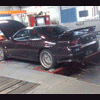N00b Bov Question
Announcements
-
Similar Content
-
Latest Posts
-
Hi all. So I have my GTR on the lift and have been working on it a few days and yesterday I unpacked the frontpipe that was wrapped with heat wrap stuff, because part of it was breaking down and soaked in oil. Noticed that the pipe itself does not actually look like a Mines, despite it supposedly being a Mines. But I could not find any fronpipe online that looks exacly like his, and I don't think it is a custom one. My amateur measurement also showed the two pipes are about equal length, so maybe this is just an old version of the Mines pipe? Would appreciate insight on this by the enlightened folks. greetings from Germany
-
Yeah. If I plug the connector in and connect the vacuum lines, I assume worse case scenario is that it simply doesn't work? Yep PFC.
-
I would think that rather than attempting to perform an engine swap, with all the difficulties associated with doing so in a country where the raw materials required are harder to get hold of, I would just build the CA20 for boost, find an EFI manifold for it and either add a turbo or a supercharger. Or both. You replace one set of difficulties with a different set, but I know which would be more fun.
-
Well, a proper aftermarket ECU** SHOULD be set up to run the purge solenoid, same as the factory ECU would, so that the tank breather system continues to operate the way it is supposed to. I have no knowledge of whether the PFC (which is what I assume you mean when you say Apexi) has an output (and internal logic) to run the purge solenoid. If it does not, then given the product design intent for the PFC, which is to be a plug in replacement for the stock ECU, I would consider that a massive failing on Apexi's behalf and would be another reason to think that they were a half-arsed solution to the problem if programmable management on RBs. I would suggest that since Nistune came to market (which is a LOOOOONG time ago now) there has been no valid argument for choosing a PFC, especially if the PFC can't do things like this. **ie, Haltach, Link, Motec, etc
-









Recommended Posts
Create an account or sign in to comment
You need to be a member in order to leave a comment
Create an account
Sign up for a new account in our community. It's easy!
Register a new accountSign in
Already have an account? Sign in here.
Sign In Now